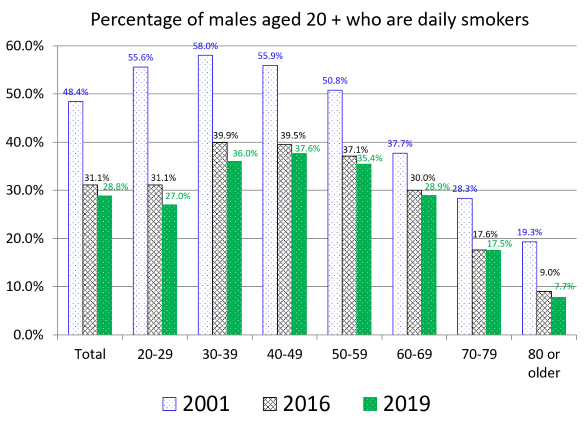Column Finance and the Social Security System 2020.08.17
【Aging, safety net and fiscal crisis in Japan】No.262: The smoking rate remains high, although it is decreasing among young adults
In this column series, Yukihiro Matsuyama, Research Director at CIGS introduces the latest information about aging, safety net and fiscal crisis in Japan with data of international comparison.
The Ministry of Health, Labor and Welfare announced the smoking rate in 2019. The smoking rate of males aged 20 years or older declined from 48.4% in 2001 to 31.1% in 2016 and 28.8% in 2019 (Figure 1). The smoking rate of females also declined from 14.0% in 2001 to 9.5% in 2016 and 8.8% in 2019 (Figure 2). When examining the changes in smoking rates by age groups, it is notable that the most significant decline occurred in those aged between 20 to 29 years.
However, as explained in Column No. 28, the smoking rate in Japan remains higher than in other countries. Figure 3 is based on the smoking rates of people aged 15 or older in each country, as indicated by the “OECD Health Statistics 2020” database. The smoking rate in Japan is lower than in France, Italy, and Germany, but still higher than in many other countries.
Figure 1: Smoking rate among males

Source: Ministry of Health, Labor and Welfare
Figure 2: Smoking rate among females

Source: Ministry of Health, Labor and Welfare
Figure 3: International comparison of smoking rates

Source: OECD Health Statistics, 2020
